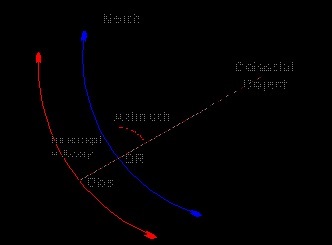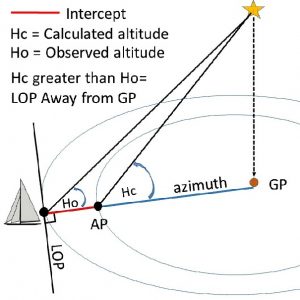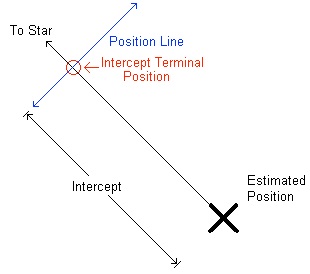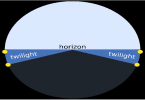The difference between the observer or true zenith distance and the calculated zenith distance is the intercept.
| If the true zenith distance is smaller than the calculated zenith distance, then the observer is nearer toward the geographical position of the celestial body compared with the DR position, and the intercept is called TOWARD. | If the true zenith distance is greater than calculated zenith distance, then the observer is further away from the geographical position of the celestial body compared with the DR position, and the intercept is called AWAY. |

 In other words we can explain intercept method as:
In other words we can explain intercept method as:
In the Marc St. Hilaire Method we calculate what the altitude of a heavenly body, the sun, moon, planet or fixed star should be at a given instant, if seen from the assumed ship’s position by Dead Reckoning.
An altitude of the heavenly body is measured with the sextant, corrected for dip, refraction, etc., in the usual way, and the true altitude found. Unless the Dead Reckoning is correct, there will be a difference between the calculated and the true altitudes. This is called Altitude Difference or Intercept, and provides us with co-ordinates or, in other words, lines which are the means for finding the ship’s correct position.






It was very help full. .